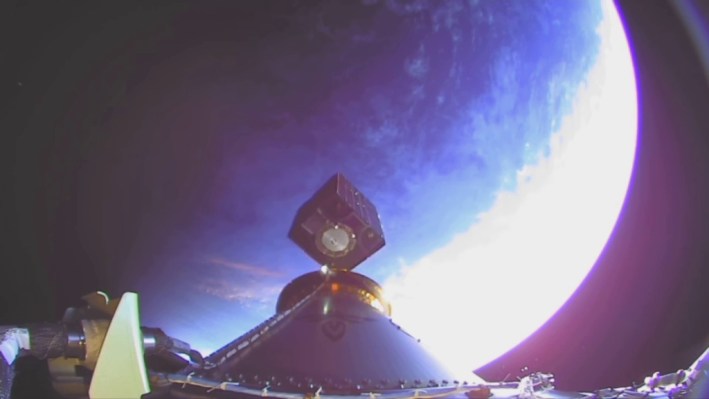Vandenberg Space Force Base set a new record for a Tactically Responsive Space launch when a rocket blasted off 27 hours after the launch order was received, surpassing the previous record of 21 days by a long shot.
The mission, called Victus Nox (or “Night Victory”), “demonstrated our ability to rapidly respond to an on-orbit threat,” said Lt. Col. MacKenzie Birchenough, who is part of Vandenberg’s Space Systems Command. “We moved at unprecedented speed to activate, launch, and perform ongoing on-orbit operations,” she said.
The clock started ticking last year when U.S. Space Force partnered with contractors Millenium Space Systems and Firefly Aerospace to carry out rapid launch missions. The two contractors were in a “hot standby” phase, awaiting the order to begin the Victus Nox mission — which was to take a satellite built by Millenium and have Firefly encapsulate and mate it to Alpha, Firefly’s launch vehicle. That part of the operation took 58 hours. They then awaited a launch order to see if they could reach the goal of being launch-ready within 24 hours, which was achieved on September 14. The previous 21-day record had been set in 2021.
Though the launch date and time had not been preplanned, in order to make it seem more like a real-world mission, Birchenough assured that public safety messages went to operations in sea and air spaces prior to launch.
“This type of mission is not currently routine and will likely not be in the future,” Birchenough said. The lieutenant colonel is the materiel leader for Space Systems Command’s Space Safari Program, which is working with the command’s Rocket Systems Launch Program to reduce the time of space missions, from acquisition to on-orbit operations.

Space Systems Command is running several efforts to advance Tactically Responsive Space (TacRS) capabilities, said Birchenough. A mission called Victus Haze is in the works to “operationally demonstrate on-orbit” TacRS capabilities, and up to 20 contracts will be awarded to small businesses for innovative research related to future TacRS missions. Birchenough indicated a demonstration flight was expected to come from ABL Space “to advance its capabilities to prepare for and execute TacRS missions that could involve multiple payloads, multiple orbital parameters, and multiple launch sites.”
The speed of the Victus Nox mission was a “culture shift in our nation’s ability to deter adversary aggression,” said Lt. Gen. Michael Guetlein, commander of Space Systems Command. He praised the response to military goals of operational speed “necessary to deliver decisive capabilities to our warfighters. This exercise is part of an end-to-end Tactically Responsive Space demonstration which proves the United States Space Force can rapidly integrate capabilities and will respond to aggression when called to do so on tactically relevant timelines.”





You must be logged in to post a comment.